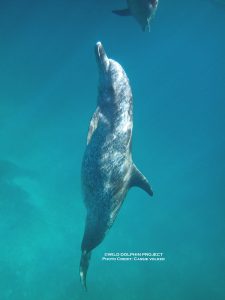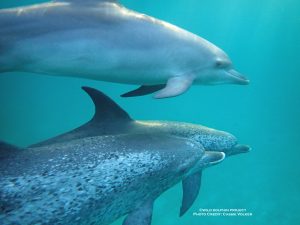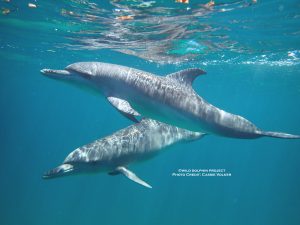TRIP 8 – E.A.R. work and finding our missing dolphins!
By Dr. Denise Herzing
Well, after reviewing two months of E.A.R. (Ecological Acoustic Recorder) data we began seeing a clear pattern for one of our locations. Using this knowledge, we set out on Trip 8 to find some of the now-elusive (read the Exodus paper here) dolphins of Little Bahama Bank (LBB). Passive acoustic monitoring, now widely used around the world to monitor and record in difficult field sites or murky water, turns out to be a great technology for our use. You can read about the E.A.R. deployment in this blog and retrieval here.
We first encountered a small group of dolphins which included two animals, a very pregnant Brush with her two-year-old calf Butter, that we had not seen for two field seasons. Part of the smaller “northern” pod on LBB, we were worried that Hurricane Irma (August 2017) and Hurricane Maria (September 2017) had taken a toll on the remaining LBB dolphins. During Trip 8 we were able to monitor Brush and Butter for three days, along with her escorts Poindexter and Navel, two male adults that actually found their way back to LBB from their brief displacement to Great Bahama Bank. A spectacular success and example of how data can improve our monitoring abilities and tracking details.
In 2019 we hope to use our E.A.R.s again to monitor our lost “southern” pod to discover their patterns. As climate changes becomes more and more of an issue for wild animals, our abilities to use new tools and technology must improve. Our responsibilities to the dolphins and their habitat demand that we continue to tell the story of their lives in these changing times.



